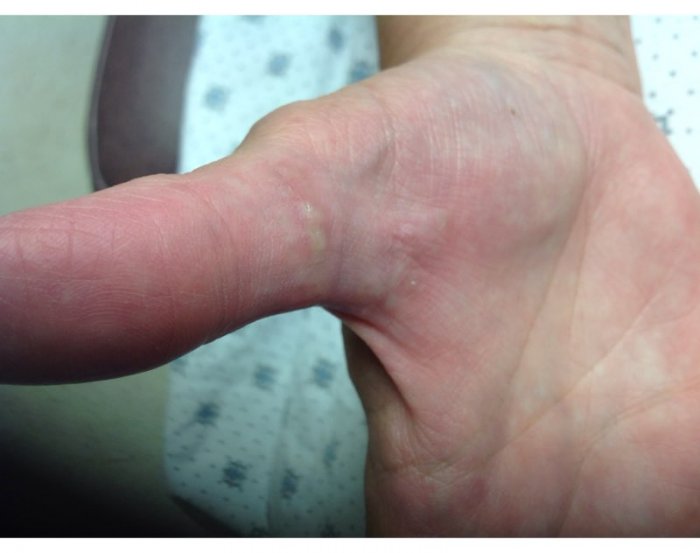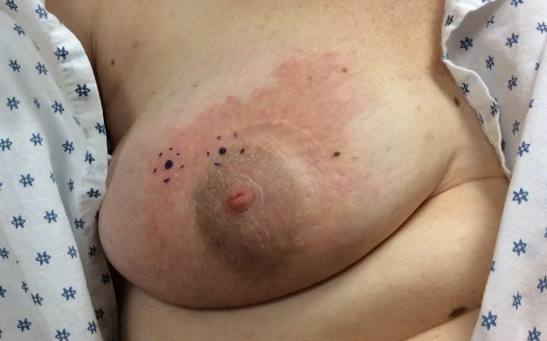
58yo female with hyperpigmented papules on arms and palms
Presenter: Olga Demidova, DO; Laura Jordan, DO; Cole Cahill, DO; Schield Wikas, DO; Monte Fox, DO
Dermatology Program: Tri-County Dermatology
CHIEF COMPLAINT: Asymptomatic hyperpigmented papules over arms and palms
CLINICAL HISTORY: A 58-year-old female was referred to the dermatology clinic by her primary care physician for evaluation of asymptomatic hyperpigmented papules involving her arms and palms. Growths appeared several weeks prior to the initial visit. During the visit, the patient reported mild shortness of breath that is chronic for her and may have worsened in the past few weeks. She denied changes in medications and any recent illness. No previous treatments to the papules. Her past medical history consisted of asthma, COPD, GERD, atrial fibrillation, breast cancer, hypertension, hypothyroidism, infantile seizures, and radiation treatments. Past surgical history included breast lumpectomy, breast biopsy, cholecystectomy, and hysterectomy. The patient denied any personal or family history of skin disease or skin cancer. Her medications at the time included atenolol, levothyroxine, flomax, hydrochlorothiazide, ibuprofen, and probiotics, and she admitted allergies to adhesive tape, voltaren, dolobid, vicodin, calan, lipitor, crestor, zetia, and simvastatin. Patient was a former cigarette smoker and denied alcohol use.




